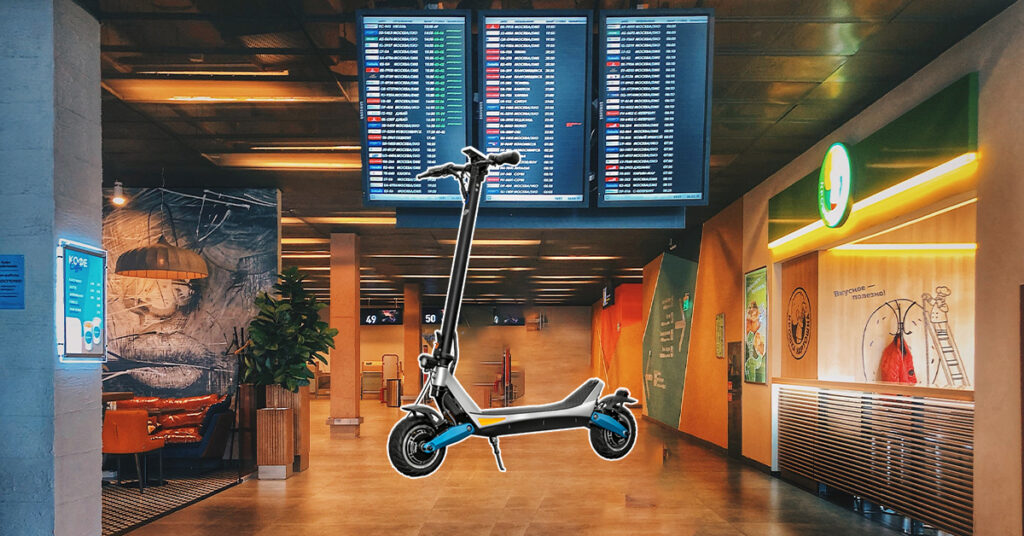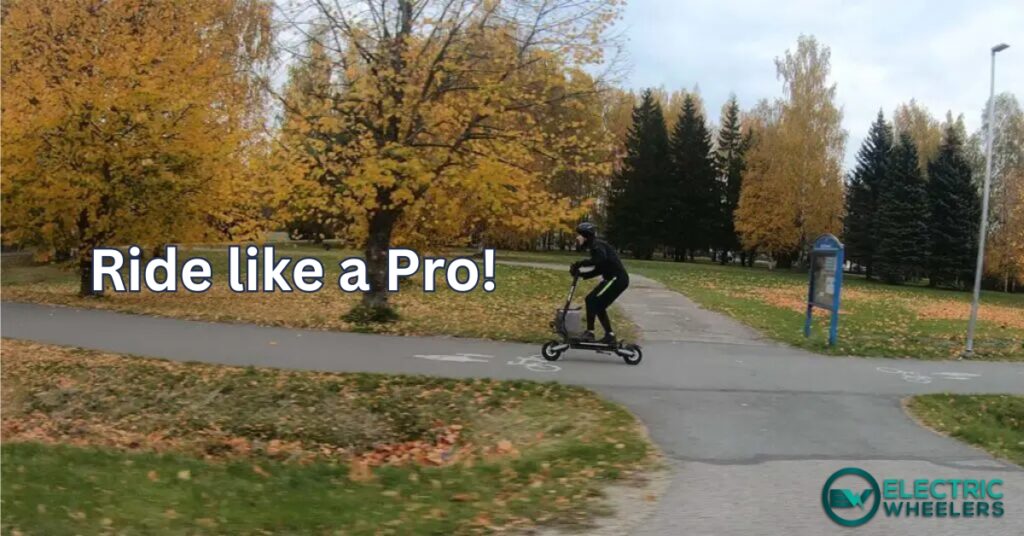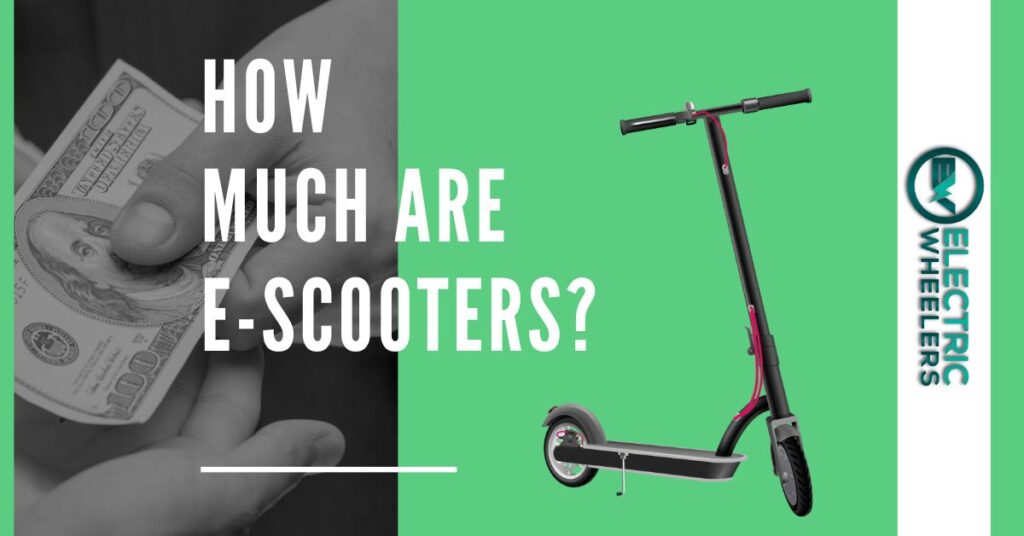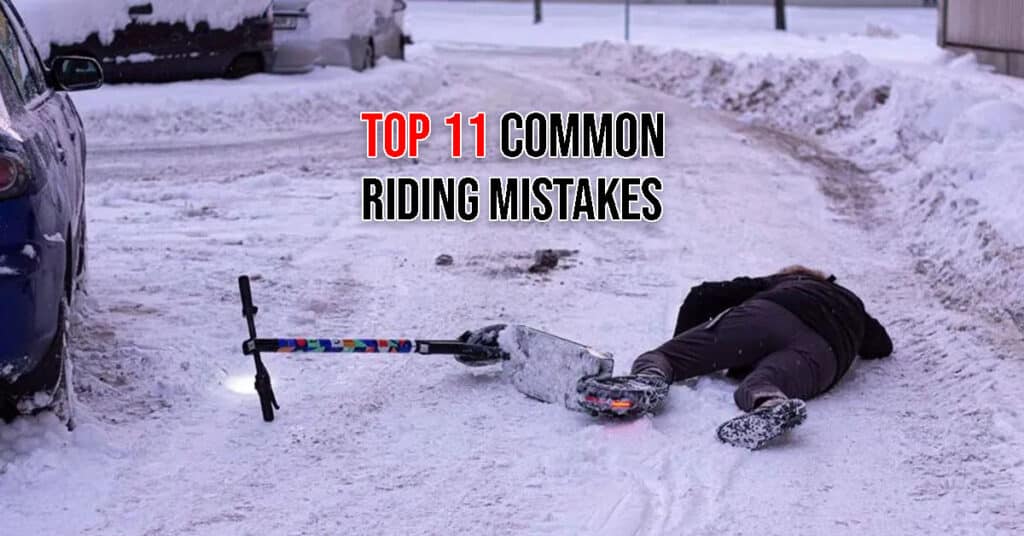Today, electric scooters have become a popular mode of personal transportation because of their compact lightweight design, convenience, portability, and eco-friendly construction.
Most of these electric devices run on lithium-ion batteries and you can conveniently fold them for storage or traveling. However, most airlines won’t allow you to bring an electric scooter on a plane.
But why?
Luckily, this blog post looks at everything you need to know about traveling with an electric scooter on a plane.
Can You Bring an Electric Scooter On a Plane?
Typically, most airlines do not allow passengers to bring electric scooters onboard, either as carry-on or checked baggage.
This is because most advanced e-scooters have lithium-ion batteries, and can be hazardous.
In fact, Li-ion batteries can suddenly malfunction, overheat, and then explode inside the plane, causing damage to the aircraft or panic among passengers.
Factors to Consider When Travelling With E-Scooter
Here are a few factors to consider.
Size and Weight
The other reasons why it can be challenging to bring your electric scooter on a plane are its size and weight.
Airlines have strict restrictions concerning the size and weight of luggage.
Note that some advanced models have a small and sturdy platform for the rider to stand on, and a handlebar for efficient steering. These models are usually smaller and can be allowed onboard.
Other models are designed to be ridden standing up and can be folded and stored in a carrying case. Fortunately, these models can also be allowed onboard as long as they meet the size and weight restrictions.
Note that all airlines have weight limits. So, the type of airline and ticket you have will determine the maximum weight allocation.
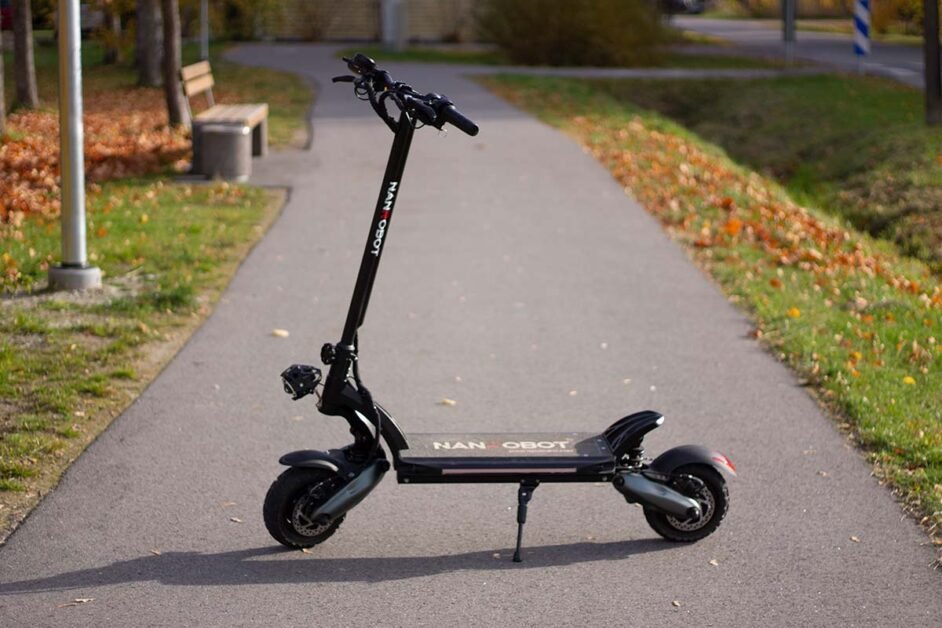
Typically, the weight limit for most airlines is around 50-70 pounds (22.7 – 31.8 kg) per bag for checked luggage. The weight limit for carry-on luggage, on the contrary, is around 15-20 pounds (6.8-9.1 kg), and the size of carry-on luggage is usually limited to a maximum of 45 linear inches. This is for the length + width + height.
Although some airlines might have stricter size limits, it is advisable to check with the airline’s authority to find out their specific policies concerning carry-on luggage.
Battery Type & Capacity
If you have an electric scooter with lithium-ion batteries, you must remove the battery and ensure it is properly packed inside a box or a hard-sided case. Some airlines might even require you to provide the necessary documentation proving that the scooter is safe for travel on a plane.
The International Air Transport Association (IATA), Federal Aviation Administration (FAA), and Civil Aviation Authority (CAA) have established guidelines for the safe transportation of lithium-ion batteries by air.
In short, the minimum requirement of lithium-ion batteries in a plane, as carry-on baggage, should be below 160Wh.
If your scooter does not have a battery, it can be allowed on a plane. However, it must meet the airline’s weight and size limit, and you should contact the authority to confirm.
Medical and Mobility Aid
In general, medical scooters have slightly different requirements than recreational scooters.
If the electric scooter is used as a medical necessity mobility aid device, some airlines will allow them as checked or carry-on luggage – but only if you can prove that it is indeed a necessity.
Also, the battery capacity must meet the travel requirements, and any spare battery must be stored safely. You can confirm the maximum battery capacity allowed by contacting your airline’s authorities several days before travel. Also, you will know the maximum size and weight capacity required.
Traveling With Small Kids’ E-Scooter
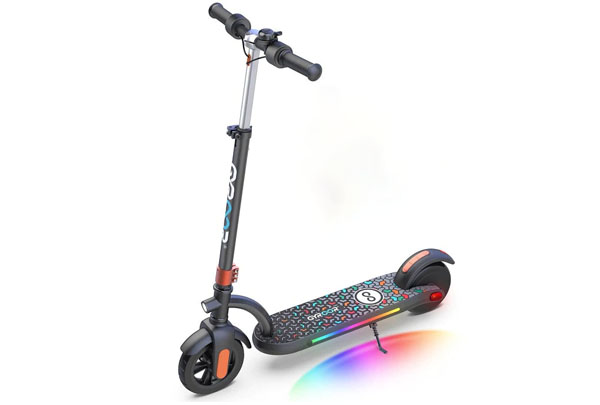
Kids’ electric scooters are small low-powered e-vehicles. They are also lightweight, portable, and designed with travel in mind. So, you might be able to check them in on a plane.
Unfortunately, most airlines do not allow passengers to bring small kids’ electric scooters as carry-on or checked luggage, no matter their size, design, and weight. Even if the battery is less than 160 watt-hours.
Therefore, it is always a good idea to contact your airline prior to travel to find out if they allow it. Furthermore, many airline policies restrict traveling with devices with Li-ion batteries.
If your particular airline allows you to carry a kid’s electric scooter, you must disassemble it and pack it in a safe box and check it in as baggage. However, it must meet the size and weight restrictions.
Traveling With Large Adult E-Scooter
Most likely, you can not bring a large electric scooter on a plane because it would violate all the aforementioned limits.
First of all, electric scooters for adults are big and heavy. They definitely can not fit under the limits of carry-on baggage.
Secondly, these scooters have lithium batteries with over 160 watt-hours of energy capacity.
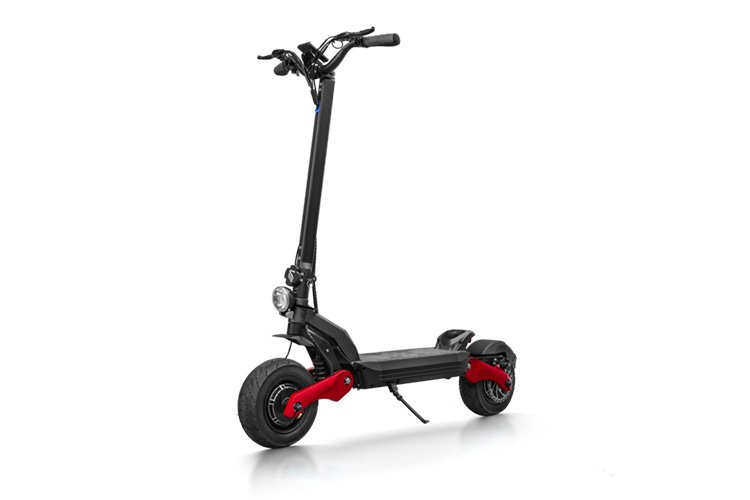
The Federal Aviation Administration (FAA) has regulations in place for the transportation of lithium-ion batteries, and most airlines have adopted similar policies.
These regulations typically prohibit the carriage of lithium-ion batteries with a watt-hour rating of more than 160 in the passenger cabin and limit the number of larger batteries that can be carried in checked baggage.
The third factor we discussed before was the medical and mobility aid. Most likely such electric scooters are not for a mobility aid.
Unfortunately, you can not bring an adult electric scooter on a plane.
Traveling With Electric Scooter as Medical Device
An electric scooter used as a medical device is usually classified as assistive equipment. So, most airlines consider such items as special and not standard luggage.
As standard procedure, you must remember the FAA travel requirements concerning e-vehicles. The first requirement is the battery’s capacity. The FAA recommends electric scooters with a battery capacity of less than 160Wh for each battery.
However, electric mobility devices are allowed up to 300Wh main battery capacity. As the passenger, you should check the type of battery and also you must include the scooter’s model.
Moreover, it would be best to arrive at the airport early to give the airline’s staff enough time to check the scooter and store it as checked luggage in the luggage compartment.
Most airlines require you to detach the battery and store it in a safe box before boarding the plane. Similarly, you should carry all documentation to prove that you indeed rely on the scooter for mobility and that it is safe to travel on a plane.
If your airline does not permit your specific scooter on the plane (for some reason), and you need a mobility e-vehicle to get around while traveling, you can rent one after arriving at your destination.
Remember that most travel-related businesses today offer mobility scooter rentals for travelers with mobility needs. So, contact them and find out more about their availability and rental policies.
Lastly, remember that all airlines have their policies concerning electrical aid mobility devices. Again, contacting them to understand everything is a great idea.
Conclusion
Generally, electric scooters are fun, easy to operate, and can be the best alternative for recreational riders or commuters to get around.
However, in most cases, you can not bring an electric scooter on a plane unless it’s a medical device.
Mostly, it is because of the large lithium-ion battery. But the size and weight of the scooter can also be a problem.
A freelance writer and copywriter.

